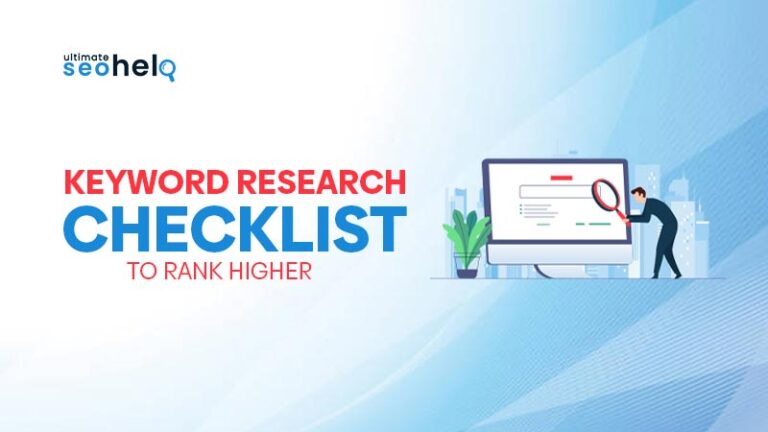Effective PPC keyword research is the cornerstone of a successful digital advertising strategy. This allows you to reach your target audience and maximize your return on investment (ROI). It’s like finding the right key to unlock the door to your target audience. In this blog, we’ll break down the keyword research process into easy steps. This will result in you in reaching the right people when running a PPC ad.
This blog will contain practical tips and insights to help you master the art of keyword research for PPC. By the end, you’ll be well-equipped to create effective ad campaigns that connect with your target audience and drive business success.
Brainstorm Initial Keywords
When it comes to keyword research for pay-per-click the first step is to analyze. This means you need to take some time to think of words or phrases that are relevant to your business, products or services. You can jot down any ideas that come into your mind and make sure that you think from the perspective of your target audience. What terms would they use to search for what you offer? This brainstorming session helps you to generate a list of keywords to work with.
Use Keyword Research Tools
Keyword research tools like Google Keyword Planner, SEMrush, or Moz Keyword are beneficial in finding the right keyword for your PPC campaigns. These tools provide valuable insights into competition-level keyword search volumes and even suggest related keywords you may not have considered. They help you understand what people are searching for and how often, allowing you to target keywords with high search volumes and relevance to your business.
So, by using these tools, you can make more informed decisions about which keywords to use in your PPC campaigns. This ultimately improves your chances of reaching your target audience and driving more traffic to your website.
Consider Keyword Intent
When considering keyword intent, it’s essential to understand what people are looking for when they search for a particular keyword. Are they seeking information, looking to make a purchase, or searching for specific services? By understanding the intent behind each keyword, you can align your PPC campaign with the users’ expectations and provide them with relevant content.
For example, if someone searches for the best running shoes, their intent is likely to find recommendations or reviews for running shoes. In this case, you should create PPC ads that highlight the benefits and features of your running shoes and direct users to a landing page where they can browse and purchase the shoes. This way, keyword intent also ensures that your ads are relevant, increases the likelihood of conversions, and improves the overall effectiveness of your PPC strategy.
Focus on Long Tail Keywords
Long tail keywords are more specific and detailed phrases people use when searching for something. These keywords have lower search volumes but higher conversion rates. They also help you stand out from the competition. So, targeting long-tail keywords in your pay-per-click campaigns allows you to reach a more niche audience who are active for exactly what you offer.
For example, instead of targeting a generic keyword like shoes, you can target a long tail keyword like women running shoes with arch support. This way, you’re more likely to attract users mainly looking for that type of shoe, increasing the chances of conversions.
Remember, while using long-tail keywords, it’s important to align your ad copy and landing pages with the users’ intent. Make sure your ads and landing pages provide specific information or solutions that the user is looking for. This increases the chances of successful conversions.
Consider Keyword Match Types
When it comes to keyword match types in PPC, it’s all about finding the right balance between reach and selectivity. Broad match allows your ads to show for variations and related searches, giving you a wider audience. On the other hand, phrase match narrows it down a bit by targeting searches that include your keyword phrase in the same order. Exact match is the most specific, showing your ads only for searches that match your keyword. Each match type has its pros and cons, so it is essential to consider your campaign goals and budget while choosing the right match for your keyword.
Group Keywords into Ad Groups
When it comes to elaborating point group keywords into ad groups. You need to group your keywords based on their similarities. This way, you can create targeted ad groups that cater to specific audiences. As a result, this increases the chances of reaching the right people with your ads.
For example, if your keywords are related to sports, you can create an ad group specifically for sports-related keywords. This helps you organize your campaigns and target specific audiences more effectively.
Analyze Keyword Performance
Analyzing keyword performance helps us see which keywords drive more traffic, engagement, or conversions. By tracking metrics like click-through rates and conversion rates you can optimize your content and marketing strategies to target the most effective keywords.
Testing is the Key
When it comes to PPC advertising, the test becomes a crucial aspect. This involves testing different keywords, analyzing their performance, and adjusting based on the data gathered. Remember that you run through your keyword research checklist before finalizing the keywords for your PPC.
By continuously refining your keyword selection, you can improve the effectiveness of your pay-per-click campaigns and maximize your return on investment. It’s all about finding keywords that resonate with your target audience.
Final Words
Incorporating PPC keyword research into your strategy for PPC keyword research is fundamental for achieving success in your PPC advertising campaigns. It ensures you identify the most relevant and effective keywords to target and get the best results possible. So, keep the above tips in mind the next time you perform a keyword research!!


